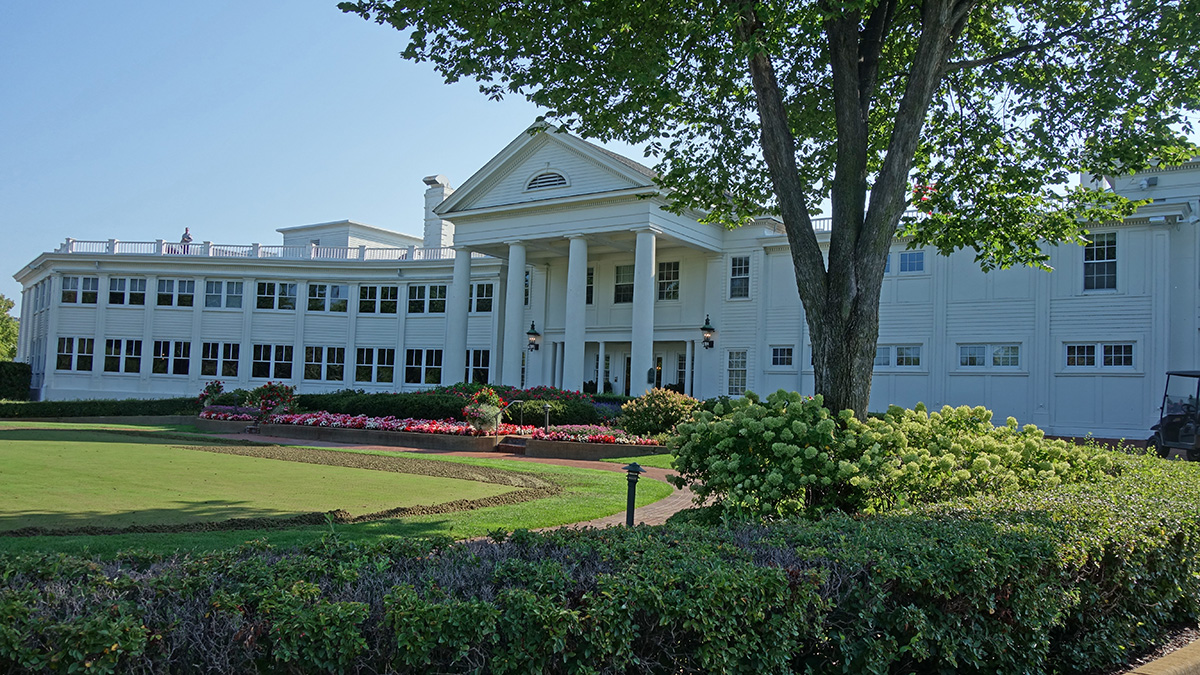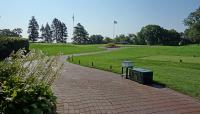This private, eighteen-hole course is elevated above the western shore of Bde Maka Ska (formerly Lake Calhoun), part of Minneapolis’s Chain of Lakes. A large Colonial Revival clubhouse, designed by architects Franklin and Louis Long, is approached by a circular driveway and occupies the northeast corner of the course. A terrace east of the clubhouse overlooks the lake, with an adjacent kidney-shaped pool added in 1935. Parking lots and tennis courts are to the west, and smaller support buildings are scattered around the property. Part of the course is north of busy Excelsior Boulevard; a steel-arch bridge carries golfers over the traffic.
Interest in golf first manifested in St. Paul with the construction of the Town and Country Club in 1888. Across the river, enthusiasts formed the Minneapolis Golf Club (later the Bryn Mawr Club) in 1898, but they lacked adequate facilities until two members discovered the lakeside site. Prominent community members organized the Minikahda Club and acquired enough land to develop a nine-hole course, which opened in 1899. Membership soon reached six hundred. The club continued to add to the grounds and the course gained another nine holes in 1906, designed by members C. T. Jaffray and Bob Taylor.
Charles Evans won the National Open Tournament held at the club in 1916, but East Coast golfers considered the greens “absolutely rotten.” The club soon enlisted golf course architect Donald Ross to do a redesign. which was finally completed in 1920.
Dutch elm disease killed some of the course’s oldest trees in the 1960s and 1970s, leading the club to plant new trees throughout the property. By 1997, deterioration of the irrigation system and features designed by Ross required renovation of the course. Using Ross’s original plans, Ron Pritchard, prepared plans for the project, with minor changes to accommodate modern practices.














